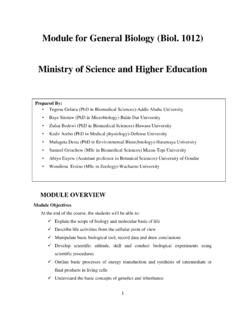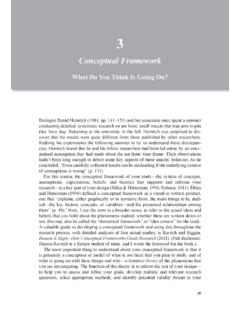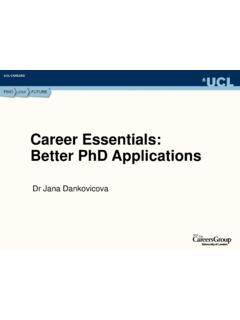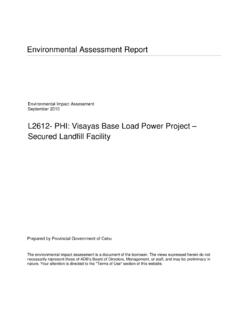Transcription of Nucleotides & Nucleic Acids Multiple Choice
1 Nucleotides & Nucleic Acids Multiple Choice Model Answers 1. Level A Level Subject biology Exam Board OCR. module Foundations in biology Topic Nucleotides & Nucleic Acids Booklet Model Answers 1. Time allowed: 16 minutes Score: /12. Percentage: /100. Grade Boundaries: A* A B C D E. >69% 56% 50% 42% 34% 26%. Dr. Asher Rana 1. Question 1. DNA polymerase catalyses the formation of phosphodiester bonds during DNA replication. Which of the statements, A to D, will not affect the rate of phosphodiester bond formation? [1]. A. temperature B length of DNA molecule C pH. D free nucleotide availability This question is about enzymes, so temperature, pH and substrate concentration (nucleotide availability) all affect rate. Dr. Asher Rana 2. Question 2. Which of the following statements, A to D, about DNA replication is correct? A. RNA will bind to DNA through complementary base-pairing.
2 B. The distance between the strands in the double helix will always be the same. C. The proportion of adenine in a Nucleic acid will always equal the proportion of guanine. D. The formation of phosphodiester bonds will occur in the same direction on each strand during DNA replication. [1]. RNA doesn't bind to DNA it is transcribed from DNA. DNA strands are anti parallel so the strands are the same distance apart but the formation of phosphodiester bonds is in opposite directions 5 to 3 and 3 to 5. Adenine will be in the same proportion as thymine through complementary base pairing A' was also allowed in this question as RNA is technically bound to DNA once it has been transcribed Dr. Asher Rana 3. Question 3. During which stage of the cell cycle does semi-conservative DNA replication take place? A. first growth phase B. prophase C. second growth phase D.
3 Synthesis phase [1]. G1 and G2 are growth phases when proteins and Nucleic Acids are made creating new organelles. The S' phase is when DNA replication takes place Dr. Asher Rana 4. Question 4. DNA is formed from three main groups of molecules: pentose sugars, phosphate groups and nitrogenous bases. The bases can be divided into purines and pyrimidines. Identify the two purines below. NH2 O. A. N N HN N. N N H2N N N. H H. adenine guanine O. B O H. H. N N. HN. H N O. H2 N N N. H H. guanine uracil C NH2 O. H H3C H. N N. H N O H N O. H H. cytosine thymine D. O. H3C H NH2. N. N N. H N O. N N. H H. thymine adenine [1]. Adenine and guanine are purines these are the larger bases, pyrimidines are smaller. A purine always base pairs with a pyrimidine Dr. Asher Rana 5. Question 5. A standard method can be used to extract DNA from the nuclei of cells in kiwi fruit.
4 The statements below list some of the steps involved in this method. Which statement is not correct? A. chop the kiwi fruit to break open cell membranes B. add detergent to dissolve nuclear membranes C. add protease to digest histone proteins D. pour ice cold ethanol onto filtrate to precipitate DNA. [1]. Chopping fruit will not break open membranes! You need a blender. The other 3. steps are part of the DNA extraction process. Dr. Asher Rana 6. Question 6. DNA carries the genetic code which is non-overlapping and degenerate. Which of the options, A to D, contains the correct definitions for non-overlapping and degenerate code? A. Each nucleotide is only part of one triplet of bases and the molecule breaks down easily. B. The genes follow straight after each other and the molecule breaks down easily. C. Each nucleotide is only part of one triplet of bases and more than one triplet codes for a specific amino acid.
5 D. The genes follow straight after each other and more than one triplet codes for a specific amino acid. [1]. Non overlapping means that each nucleotide in mRNA is translated only once. Degenerate code means that some amino Acids have more than one codon, so AAT and AAU might code for the same amino acid. The degenerate code arises because there 64 codons for 20 different amino Acids . Dr. Asher Rana 7. Question 7. During DNA replication, DNA polymerase can only work in one direction from the 3' end to the 5'. end. This means that the lagging strand has small gaps left in the backbone. DNA ligase works to seal these gaps. Which of the options, A to D, identifies the bond formed? A. hydrogen bond B. phosphodiester bond C. glycosidic bond D. peptide bond [1]. The backbone of DNA is joined by phosphodiester bonds between the phosphate group of one nucleotide and the deoxyribose sugar of the next.
6 Glycosidic bonds join monosaccharides together and peptide bonds join amino Acids . Dr. Asher Rana 8. Question 8. Which of the following processes occur during DNA replication? 1 breakage and (re)formation of phosphodiester bonds 2 breakage and (re)formation of hydrogen bonds 3 alignment of free Nucleotides with their complementary bases A. 1, 2 and 3. B. Only 1 and 2. C. Only 2 and 3. D Only 1. [1]. Phosphodiester bonds are formed between adjacent Nucleotides by the enzyme, DNA ligase. Hydrogen bonds however are broken between complementary base pairs and reformed when they align. Dr. Asher Rana 9. Question 9. Which of the following statements, A to D, about the nature of the genetic code is incorrect? A. It is a degenerate code. B. It is a triplet code. C. It is overlapping. D It is universal. [1]. The genetic code is not overlapping, each triplet of bases is read in order.
7 The code is triplet because three . bases code for an amino acid, degenerate because for many amino Acids are coded for by more than one triplet code and universal because it is the same in every organism (with a few minor exceptions). Dr. Asher Rana 10. Question 10. A length of DNA has the base sequence AATCGCGGTCGCTCA. Select the row that shows the correct complementary DNA strand and the sequence of mRNA made during transcription of the DNA sequence above. Complementary DNA sequence mRNA sequence A AATCGCGGTCGCTCA UUAGCGCCAGCGAGU. B TTAGCGCCAGCGAGT UUAGCGCCAGCGAGU. C TTAGCGCCAGCGAGT TTAGCGCCAGCGAGT. D TTAGCGCCAGCGAGT AAUCGCGGUCGCUCA. [1]. Remember T is replaced by U in RNA. You are looking for the mRNA sequence complementary to the DNA sequence at the start in the first line Dr. Asher Rana 11. Question 11. An anticodon sequence of five successive tRNA molecules involved in protein synthesis was analysed and found to have the following percentage base composition.
8 Adenine 40; Cytosine 27; Guanine 13; Thymine 0; Uracil 20 %. Which row shows the percentage base composition of the template strand of the original DNA. molecule? Adenine Cytosine Guanine Thymine Uracil A 40 27 13 20 0. B 20 13 27 40 0. C 20 13 27 0 40. D 40 27 13 0 20. [1]. DNA has thymine and not uracil, the DNA has been transcribed to mRNA then the tRNAs align with the mRNA they will have the same composition of bases as DNA but without uracil Dr. Asher Rana 12. Question 12. The following statements are about the structure of DNA. Which of the following statement(s) is/are true? Statement 1: Purine bases pair with pyrimidine bases. Statement 2: Phosphodiester bonds link adjacent Nucleotides . Statement 3: There are always equal amounts of adenine and guanine. A 1, 2 and 3. B Only 1 and 2. C Only 2 and 3. D Only 1. [1]. In DNA there will always be an equal amount of A and T, G and C as a result of complementary base pairing Dr.
9 Asher Rana 13.







